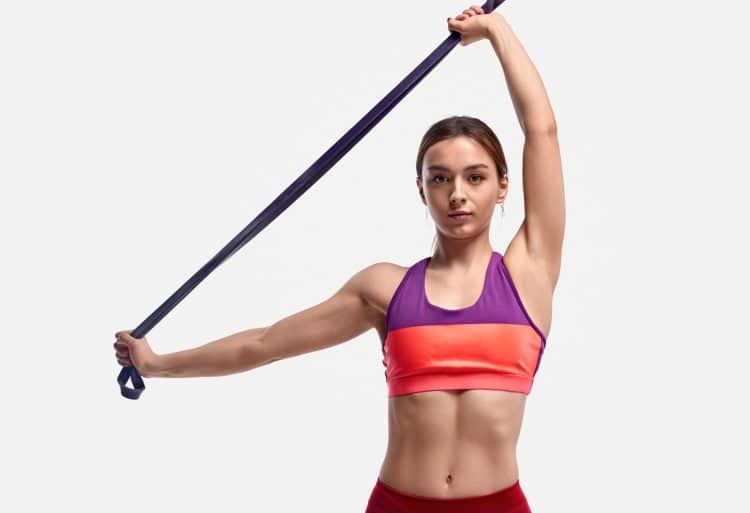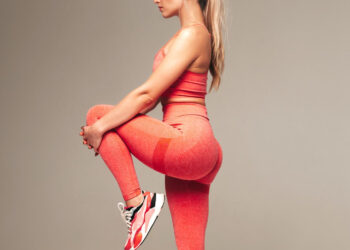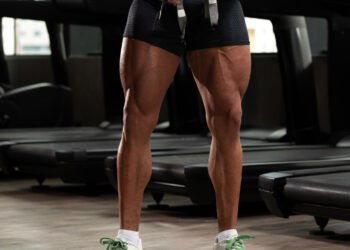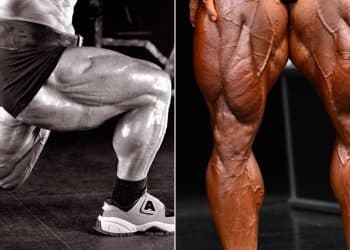There are several accepted barriers to consistent exercise. These obstacles include lack of time, insufficient knowledge or guidance, fear of injury, too little energy, and no access to facilities (1).
However, as a very experienced personal trainer, I know there are ways to overcome these barriers.
Lack of time can be addressed by focusing on short full-body workouts comprising mostly compound exercises. Too little knowledge or guidance is easy to fix – just check out the plethora of information on FitnessVolt.com! Poor energy levels are usually fixable with dietary changes and better sleep. Worried about getting hurt? Always warm up before working out, and make sure you use good form.
But what about a lack of training facilities? After all, not everyone has access to a state-of-the-art gym.
While calisthenic or bodyweight exercises are an excellent option, beginners and overweight exercisers often find the movements difficult to perform. So, while I am a massive fan of calisthenics, I also recognize that they’re not ideal for everyone.
Another barrier-busting option is resistance band training.
Level Up Your Fitness: Join our 💪 strong community in Fitness Volt Newsletter. Get daily inspiration, expert-backed workouts, nutrition tips, the latest in strength sports, and the support you need to reach your goals. Subscribe for free!
Light, portable, and cheap, you can use resistance bands to replicate virtually every machine and freeweight exercise you can think of. They’re also easy on the joints, and you can make most resistance band exercises easier or harder by altering the tension at the start of each rep.
Studies also indicate that resistance band training can be as effective as conventional weightlifting for building muscle strength and size (2).
In this article, I reveal my favorite leg and glute exercises using resistance bands. Each one is tried, tested, and proven by my army of long-time personal training clients. We love them, and I’m sure you will, too!
Top Resistance Band Exercises for Strong, Sculpted Glutes and Legs
Are you looking for the best resistance band glute and leg exercises for a sculpted lower body? Then you are in the right place! Build your workouts around the following exercises.
Reps and Sets
Do as many reps as it takes to fatigue your muscles. This might be as few as 6-8 or 20-30 more, depending on how strong your bands are and how strong YOU are! 3-5 sets should be enough for most people. If you need to do more, you may be resting too long between efforts or doing too few reps.
1. Booty Band Glute Bridge
Target muscles: Gluteus maximus, hamstrings, abductors, core.
The booty band glute bridge is one of the best exercises for increasing hip stability. As such, it’s a great way to ward off hip pain. In addition, this back-friendly move will strengthen your glutes and outer hips, creating a shapelier lower body. This is my go-to butt exercise for many of my personal training clients.
How to do it:
- Lie on your back with a booty band around your legs, just above or below your knees.
- Bend your legs and plant your feet firmly on the floor. Brace your core.
- Push your knees outward and lift your hips until they are extended, and you feel an intense contraction in your glutes.
- Lower your butt back to the floor and repeat.
Trainer pro tips:
- Keep pressing your knee out to maximize hip muscle engagement.
- Actively pull your heels toward your butt to work your hamstrings more.
- You can also do this exercise as an isometric or static hold.
2. Resistance Band Donkey Kicks
Target muscles: Gluteus maximus, hamstrings, core.
Bodyweight donkey kicks are a popular glute exercise. However, for many people, they’re too easy to be effective. As such, they’re often labeled as a beginner exercise. That issue is easy to remedy by adding a band. Use a strong handled or loop-type band to ensure there is plenty of resistance to work against as you extend your hip and work your glutes.
How to do it:
- Kneel on all fours so your shoulders are over your hands and your hips are above your knees.
- Place your resistance band under your hands and around one foot.
- Drive your leg back and slightly upward against the resistance offered by the bend.
- Lower your leg and repeat.
- Continue for the desired number of reps and then switch sides.
Trainer pro tips:
- Wrap the band once around your foot to make it more secure.
- Take care not to hyperextend your hip or spine, as doing so could lead to injury.
- You can also do this exercise by resting on your forearms.
3. Standing Resistance Band Hip Abduction
Target muscles: Gluteus maximus, gluteus medius, gluteus minimus, tensor fascia latae.
While I’m a big fan of short, loop-type booty bands, I also recognize that most booty band exercises involve a limited range of motion. That’s why I also like to include standing resistance band hip abductions in my lower body workouts. The more extensive range of motion means a more functional workout for the target muscles.
How to do it:
- Attach one end of your resistance band to a low anchor and the other to your ankle. Stand sideways onto the anchor, with your working leg outermost.
- Use your nearside hand for balance and support.
- Keeping your knee straight, lift your leg out and up to the side, aiming for about 45 degrees of abduction.
- Lower your leg and repeat.
- Turn around, switch legs, and do the same number of reps on the opposite side.
Trainer pro tips:
- Bend your supporting leg slightly for better balance and stability.
- Cross your working leg in front of your support leg to increase the range of motion.
- Keep your pelvis level and straight. Make sure most of the movement comes from your hip.
4. Banded Kneeling Hip Thrust
Target muscles: Gluteus maximus, hamstrings, quadriceps.
You probably won’t see many people doing this exercise, and that’s a shame. As lower back-friendly glute exercises go, it’s very hard to beat. While the set-up is a little convoluted, you’ll be good to go once you get the hang of it. I’ve done this exercise in gyms and at home, and every time, it’s delivered an awesome glute workout.
How to do it:
- Attach a loop-type resistance band to a low anchor, such as a pillar or squat rack.
- Kneel in the loop with your back to the anchor and the band across your hips. Hold onto something sturdy for balance and support.
- Sit back onto your heels by hinging at your hips.
- Drive your hips forward and into extension.
- Sit back and repeat.
Trainer pro tips:
- Kneel on a folded towel, exercise mat, or foam pad for comfort.
- Only use your arms for balance and not to make the exercise easier.
- Adjust your range of motion according to your knee health. If your knees hurt, focus on hinging your hips more than flexing your knees.
5. Banded Good Morning
Target muscles: Gluteus maximus, hamstrings, erector spinae, core.
Level Up Your Fitness: Join our 💪 strong community in Fitness Volt Newsletter. Get daily inspiration, expert-backed workouts, nutrition tips, the latest in strength sports, and the support you need to reach your goals. Subscribe for free!
If I had to choose my favorite resistance band posterior chain exercise, the banded good morning would be it. Unlike the weighted version, this exercise is lower back friendly and loads your muscles the most at the start/end of the rep, when they usually relax. It’s also much easier on your neck than conventional barbell good mornings.
How to do it:
- Using a loop-type resistance band, stand with your feet between shoulder and hip-width apart and place the band under your feet.
- Lean forward, bend your legs, and loop the band over your head. Stand up straight.
- Bend your knees slightly, brace your core, and lift your chest. Hold each side of the band to take tension off your neck.
- Push your hips back and hinge forward until you can feel a stretch in your hamstrings.
- Stand back up and repeat.
Trainer pro tips:
- Do this exercise with your back a few feet away from a wall. Push your hips back toward the wall to maximize muscle engagement.
- Raise your toes on weight plates to increase glute and hamstring engagement.
- Do not round your lower back, as this could cause severe injury.
Related:Toes Elevated Romanian Deadlift Guide
6. Resistance Band Deadlift
Target muscles: Gluteus maximus, hamstrings, erector spinae, quadriceps, trapezius, latissimus dorsi, biceps, deltoids, core.
While many trainers call squats the king of exercises, I’m not one of them. In my opinion, deadlifts are the real king as they usually work more muscles and are typically safer and more functional. No barbell? No problem, because you can do deadlifts with a resistance band.
How to do it:
- Stand on the center of your band with your feet between shoulder and hip-width apart.
- Bend your legs, lean forward, and grip one end of the band in each hand.
- Pull your shoulders back and down, brace your core, lift your chest, and slightly arch your lower back.
- Drive your feet into the floor and, without bending your arms, stand up straight.
- Pause at the top of the rep and then slowly return to the starting position.
- Reset your core and repeat.
Trainer pro tips:
- Place your hands through the loops for a more secure grip when using strong resistance bands.
- Take care not to round your lower back during any of your reps.
- Do not lean backward at the top of each rep. This is both unnecessary and dangerous.
7. Resistance Band Squat
Target muscles: Quadriceps, gluteus maximus, hamstrings, erector spinae, core.
Squats are all but compulsory if you want to build stronger, more muscular thighs. Very few exercises work your quadriceps, glutes, and hamstrings as effectively as squats. While I like air squats and other bodyweight variations, I find that adding a band makes squats much more effective. Use a strong loop-type band to overload your entire lower body.
How to do it:
- Stand in a shoulder-width stance apart and place your band under your feet.
- Duck down and loop the band over your head. Hold each side of the band to take pressure off your neck. Brace your core and stand up straight.
- Bend your knees, push your hips back, and squat down until your thighs are roughly parallel to the floor.
- Drive your feet into the ground and stand back up.
- That’s one rep – keep going!
Trainer pro tips:
- Place your heels on blocks to unlock your ankles and achieve a deeper squat.
- Place a towel on your neck for comfort.
- Experiment with the width of your stance. Narrow squats tend to hit your quads more, while you’ll feel wider squats in your hips and glutes.
8. Resistance Band Prone Leg Curls
Target muscles: Hamstrings.
Most resistance band leg exercises are compound, meaning they involve multiple muscles and joints working in unison. However, for building muscle and fixing weaknesses, a more targeted approach may be beneficial, which is where isolation exercises come in. Banded prone leg curls work your hamstrings and very little else.
How to do it:
- Attach a loop-type resistance band to a low anchor, such as a pillar, railing, or squat rack.
- Sit on the floor and put your feet through the band.
- Roll onto your front and then crawl forward until the band starts to tighten.
- Once in position, bend your legs and curl your feet into your butt.
- Extend your legs and repeat.
Trainer pro tips:
- Pause at the point of peak contraction to make this exercise even more demanding.
- Do drop sets with this exercise by moving closer to the anchor point as your muscles near failure.
- Do not rest your weight on your elbows, as doing so puts too much stress on your lower back.
9. Resistance Band Leg Extensions
Target muscles: Quadriceps.
Leg extensions are arguably the best and maybe the only way to isolate your quadriceps. While most gyms have leg extension machines, home exercisers often have to forgo this valuable exercise. However, as I said at the start, you can use resistance bands to replicate most freeweight and machine exercises, and that includes leg extensions.
How to do it:
- Attach a loop-type resistance band to a low anchor, such as a pillar, railing, or squat rack.
- Place a bench or chair in front of the anchor and sit on it facing away.
- Loop the bend around one or both ankles.
- Extend your legs until they are straight.
- Bend your legs and then repeat.
- Continue for the prescribed number of reps.
Trainer pro tips:
- Move your chair/bench further forward to make this exercise more challenging.
- Place folded gym mats or a foam pad under your thighs to lift your feet off the floor.
- Do this exercise unilaterally (with one leg) or bilaterally (with both legs) as preferred. You can also use an alternating leg movement for variety.
10. Resistance Band Donkey Calf Raise
Target muscles: Gastrocnemius, soleus.
The donkey calf raise is an old-school bodybuilding exercise often done with a partner sitting on your back. Needless to say, this is an unconventional way to load your muscles and one that I don’t usually recommend. However, you can also do this excellent calf exercise with a resistance band. In fact, I think this is the best way to load donkey calf raises.
How to do it:
- Place a loop-type resistance band under a step. Stand on the step with your feet about hip-width apart and heels hanging off the edge.
- Squat down and slip the band over your hips/lower back. Stand up, lean forward, and rest your hands on something stable, e.g., a chair.
- Lower your heels down toward the floor to get a good stretch in your calves.
- Rise up onto your tiptoes.
- Alternate between these two positions for the required number of reps.
Trainer pro tips:
- You can also do this exercise with the band directly under the balls of your feet if no suitable step is available.
- Try angling your feet in or out to hit different parts of your calf muscles.
- Do regular banded calf raises if you find this exercise too awkward or convoluted.
Closing Thoughts
Resistance bands are a potent but often overlooked training tool. For reasons that I don’t understand, a lot of exercisers assume they’re only suitable for toning and useless for building muscle and strength.
Contrary to this point of view, I’m happy to confirm that resistance bands can help you achieve almost any training goal. Not only that, but they’re also ideal for all levels of exerciser, from absolute beginner to ultra-advanced.
So, don’t let a lack of facilities stop you from achieving your best-ever shape. Get some bands and start pumping rubber instead of iron. Remember, studies indicate that resistance bands can be as effective as weights.
Related: Full-Body Resistance Band Workout for Home Exercisers
References:
- Brunet J, Taran S, Burke S, Sabiston CM. A qualitative exploration of barriers and motivators to physical activity participation in women treated for breast cancer. Disabil Rehabil. 2013;35(24):2038-45. doi: 10.3109/09638288.2013.802378. Epub 2013 Jun 17. PMID: 23772995.
- Lopes JSS, Machado AF, Micheletti JK, de Almeida AC, Cavina AP, Pastre CM. Effects of training with elastic resistance versus conventional resistance on muscular strength: A systematic review and meta-analysis. SAGE Open Med. 2019 Feb 19;7:2050312119831116. doi: 10.1177/2050312119831116. Erratum in: SAGE Open Med. 2020 Sep 9;8:2050312120961220. PMID: 30815258; PMCID: PMC6383082.
Article Updates Timeline:
Our editorial team experts constantly update the articles with new information & research, ensuring you always have access to the latest and most reliable information.
February 8, 2024
Written By
Patrick Dale, PT, ex-Marine
Reviewed By
Editorial Team
Fact Checked By
Tom Miller, CSCS









